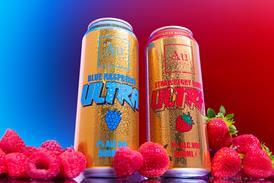Super-waif Diet Coke fan Kate Moss once said: “nothing tastes as good as skinny feels” – much to the delight of teenaged girls everywhere (and the horror of their appropriate adults).
It’s a phrase we all thought was safely consigned to the 1990s, along with platform trainers and Beanie Baby collections. But, thanks partly to the rise in popularity of GLP-1 weight-loss drugs and partly to the horrors of social media, it was used again today, in 2025, as part of a health-focused marketing presentation.
Jonny Forsyth, Mintel’s senior director of food and drink, pulled no punches during his talk at The Grocer’s Marketing Business Lunch at the Bloomsbury Hotel today. Focusing on the ‘Rise of the Worried (Un)Well’, he outlined a number of essential health-related takeaways for the brand marketers in the room.
Pick a (UPF) side
To begin with, brands need to choose what side they fall on in the ongoing UPF debate, he said. Health-focused food can either be fortified with additional goodies or pared right back à la M&S’ one-ingredient cornflake offering – but they can’t be both. Whether they choose to go super-natural (Deliciously Ella) or boost their products with vitamins and minerals (Superloaf), health food brands need to pick a lane.
The ongoing battle against fatigue, especially in the younger generation, was also flagged as a rising problem, with ‘brain rot’ depressingly being named as word of the year. Brands, though, can capitalise on this – Forsyth name-checked Trip as being a particularly good example of this, as the CBD-infused drink recently overtook Sprite in sales.
“It’s ideal for consumers looking for calm in the chaos of everyday life,” he explained, adding that the brand has also managed to position CBD as an everyday ingredient.
Part of this wellness-focused opportunity for brands also involves bringing back the balance for a generation of angst-ridden younger consumers, who are served a confusing social media diet of wellness content on one hand and weight-loss injections on the other.
It’s here that the infamous Moss quote was used – but this time to remind the room of the potential dangers that could lie ahead.
Other science-led health trends to keep an eye on included high protein (yes, it’s here to stay) and high fibre. Is fibre cool? Not yet – but brands were reliably told to watch this space.
HFSS – clarity or confusion?
A highlight of the morning was Guy Parker, chief executive of the ASA, opening a panel on HFSS advertising stating: “There is no such thing as certainty in law, ever.”
While that initially sounded like bad news for marketers in the room looking for clarity on the recent HFSS legislation changes, the experts on hand were quick to clarify. While there would always be edge cases and ‘blurry boundaries’, the brand advertising question has now been clearly answered, with brand advertising falling outside the scope of the restrictions – as long as products are not shown.
Gareth Barr, head of policy at ITV, explained that, in the main, brands were free to “proceed with a reasonable degree of caution”.
On the much-discussed topic of what the new rules will mean for Christmas ads, Barr predicted that this first year would see brands and retailers focusing on leaning into the feeling of Christmas – but without showing the actual product.
Will that mean we are likely to see the Coke truck Christmas ad, but without the iconic bottles?
As a clear case of brand advertising, it falls under the exemption – but there remains a grey area where the brand ads are designed to trigger a specific product recall.
In these instances, brands will need to get creative in order to work around the legislation. That in itself might not be a bad thing, with Clear Channel’s Aimee McKay describing “half of all creative as mediocre” and positioning the changes as a “real opportunity for brands to step up”.
Whatever the end result, food and drink brands will be watching closely to see how others navigate the changes. Will 2025 finally be the year of the Diet Coke truck? Kate Moss would definitely approve.


















1 Readers' comment